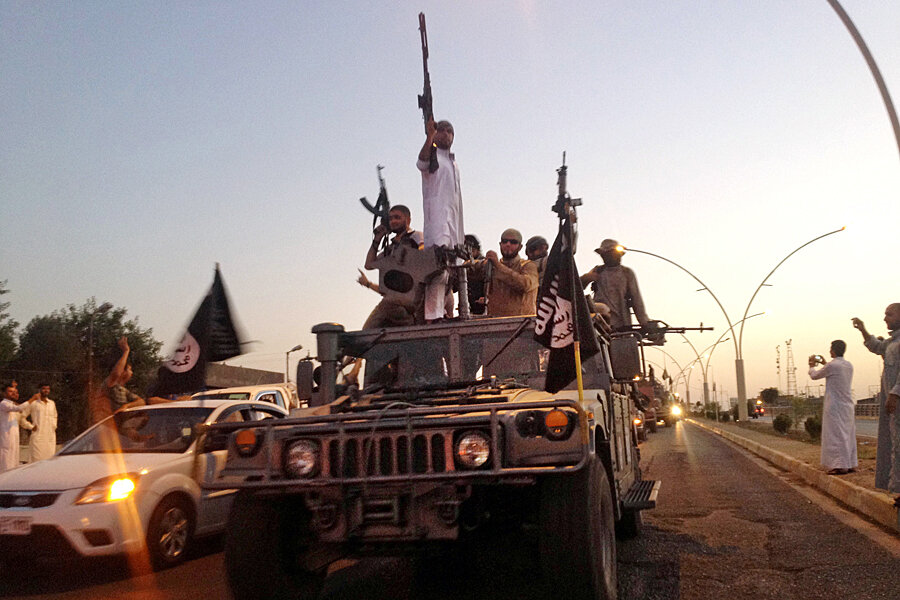US outlines mission to retake Mosul from Islamic State. Why so public a plan?
Loading...
| Washington
The US military is planning an operation of considerable size to retake one of Iraq’s largest cities from the Islamic State (IS).
The level of detail that a military official shared, during a Thursday briefing with Pentagon reporters, was striking.
The operation will be carried out by roughly 24,000 Iraqi troops who are currently training to retake Mosul from an estimated 1,000 to 2,000 IS fighters sometime in April.
The operation could be pushed back to May if US forces do not feel Iraqi troops are quite up to the job before then. The point, the official said during the briefing, is to avoid the high heat of summer.
So why would a top US military official from Central Command, which is responsible for running American operations in the region, share this level of detail so far in advance of the mission? In other words, why telegraph the intent?
It was clearly no mistake, since the official knew he was speaking with a roomful of reporters – who indeed asked that very question about giving advance warning of the operation. Perhaps something to do with psychological warfare?
The answer, the US Central Command official said, was “just to describe the level of detail and commitment to this” that the Iraqis have. “This is their plan,” he added. “They have bought into it.”
Still, the move bewildered some former top military commanders.
“I was surprised to see them do this,” says retired Lt. Gen. David Barno, who served as commander of US forces in Afghanistan from 2003 to 2005. “It’s a little perplexing to me to go into the amount of detail and the timelines that they did.”
It makes some sense, however, to reinforce US confidence in the Iraqi security forces as they move to retake the ground, he adds.
And from a psychological warfare perspective, “It sends a message that they are taking back the city.”
It might, for example, cause IS forces to converge on the city, drawing them away from fighting elsewhere. Or it could inspire them “to make a tactical withdrawal and go somewhere else, if they realize war is coming.”
Analysts including Mr. Barno agree that there is slim chance of the latter scenario.
More likely – and important: This could be an effort to avert civilian casualties by encouraging people to leave before the fierce fighting begins.
This happened in the second battle of Fallujah in 2004, notes retired Col. Peter Mansoor, who was the executive officer for Gen. David Petraeus in Iraq.
The problem with telegraphing the plans to retake Mosul, however, is that it allows IS fighters to prepare.
“That’s one of the downsides,” says Barno, who is now a distinguished practitioner in residence at American University’s School of International Service in Washington.
IS forces will not stand and fight “in big chunks of 500 here and 1,000 there.” Instead, they will plant roadside bombs and set booby traps, using their capabilities “to make it a deadly place.”
In the second battle of Fallujah, insurgent fighters set up Jersey barriers and rigged homes with explosives.
Like Fallujah, Mosul is a large city of 1 million people, and any US-backed invasion with Iraqi troops will prove to be a “very tough urban fight,” says Dr. Mansoor, chair in military history at Ohio State University in Columbus.
Mosul is among the wave of Iraqi cities that fell last June to IS. Several Iraqi brigades fled the city, many shedding their uniforms and abandoning caches of US-supplied weapons.
For the operation coming up, a force of 24,000 Iraqi troops against an estimated 1,000 to 2,000 IS fighters might seem a bit much, but many analysts argue the figures are about right.
“If you’re a commander in combat, you always want overmatch,” Mansoor says. “You want as many well-trained forces as you can.”
It will take approximately 12 brigades consisting of about 2,000 troops each to conduct the Mosul operation, military officials estimate.
Officials might use eight of these brigades to attack Mosul initially, and keep four back to rotate in for fighters as needed, Mansoor says. “You might not use them all at once.”
Still, Barno adds, “It could be weeks to retake the city.”







